Customs Regulation Act
Federal Law No. 289-FL from August 3, 2018, which is generally intended to improve administration and reduce customs formalities, regulates:
– order of import (export) of goods to the Russian Federation and their transportation through the country under customs supervision;
– order of temporary storage and customs declaration of goods, their usage according to the customs procedures;
– procedure of customs control, levying and payment of customs charges and special duties;
– rights and duties of bodies interacting during customs procedures;
– legal status and organizational framework of customs authorities’ activity in the Russian Federation;
– aspects of embargo on certain types of goods within the Russian territory.
The Law permits:
– to use ‘register guarantee’ of customs agents during customs declaring procedure;
– delivery of preliminary decisions on application of customs valuation methods of imported goods;
– exemption of fair companies from guarantees for compulsory payment of customs duties;
– provision of preliminary information in English.
Along with that, the term for preliminary decision on the country of origin and classification of goods has become shorter, the list of cases for exemption from guarantees for compulsory payment of customs duties has become larger, the customs procedure of free warehouse has been introduced, and the procedure of identification of goods in their derivatives has been simplified.
Furthermore, the act introduces provisions for customs clearance charges for personal goods (including ones sent by international mail) via program of technical payment systems used by customs payment operators, or by cash paid to customs authorities’ desk (cash office of the federal postal service), or to authorized officials (given the agreement of full personal liability for damage according to the legislation).
Customs duties, taxes on personal goods, which are delivered by carriers (transportation companies or delivery services) to private persons, are paid by money transfer.
The Law provides for the customs payment operators’ duty to make provisions for advance payments, customs duties, taxes and other payments using national payment instruments within the terms fixed by the Central Bank of the Russian Federation.
In addition, the Law specifies the procedure of uncontested recovery of custom authorities’ orders by banks. Particularly, uncontested recovery of custom authorities’ orders are to be executed according to the priority set by the civil legislation of the Russian Federation:
– if levying money from ruble accounts - not later than 1 transaction day following the order receipt day;
– if levying money from foreign currency or precious metals accounts - not later than 2 transaction days following the order receipt day;
– if levying by electronic money balance in rubles - not later than 1 transaction day , and in foreign currency – 2 transaction days, following the order receipt day.
This Federal Law was put in force on September 4, 2018, excluding certain provisions that will take effect later.
For example, provisions of law concerning electronic interaction of customs authorities and payers will come into effect on January 1, 2019, electronic consulting provisions – on January 1, 2020, provisions on
In general, the new Federal Law consists of 398 articles. We recommend our readers that are involved in foreign trade to take a closer look at the Law, as this significant act will define basic concepts of customs regulations for years to come.
Trends in chemical industry
Information agency Credinform has prepared a review of trends in activity of the largest Russian chemical companies. The largest Russian chemical companies (TOP-10 and TOP-1000) in terms of annual revenue were selected according to the data from the Statistical Register for the latest available periods (2014 - 2017). The analysis was based on data of the Information and Analytical system Globas.
Net assets is a ratio reflecting the real value of company's property. It is calculated annually as the difference between assets on the enterprise balance and its debt obligations. The ratio is considered negative (insufficiency of property), if company’s debt exceeds the value of its property.
| № | Name, INN, region, activity |
Net assets value, bln RUB |
Solvency index Globas | ||
| 2015 | 2016 | 2017 | |||
| 1 | 2 | 3 | 4 | 5 | 6 |
| 1 | JSC URALKALI INN 5911029807 Perm region Manufacture of fertilizers and nitrogen compounds |
102.6 |  168.2 168.2 |
 209.0 209.0 |
189 High |
| 2 | JSC Nizhnekamskneftekhim INN 1651000010 Republic of Tatarstan Manufacture of synthetic rubber in primary forms |
92.0 |  108.7 108.7 |
 132.4 132.4 |
134 Superior |
| 3 | JSC TOGLIATTIAZOT INN 6320004728 Samara region Manufacture of fertilizers and nitrogen compounds |
69.0 |  67.3 67.3 |
 68.2 68.2 |
199 High |
| 4 | Kazan JSC Organichesky Sintez INN 1658008723 Republic of Tatarstan Manufacture of plastics in primary forms |
35.2 |  47.5 47.5 |
 53.7 53.7 |
127 Superior |
| 5 | JSC MINUDOBRENIYA INN 3627000397 Voronezh region Manufacture of fertilizers and nitrogen compounds |
39.8 |  43.8 43.8 |
 47.0 47.0 |
200 Strong |
| 996 | KEMEROVO JSC AZOT INN 4205000908 Kemerovo region Manufacture of fertilizers and nitrogen compounds |
-9.1 |  -1.1 -1.1 |
 6.8 6.8 |
194 High |
| 997 | JSC EKOPET INN 3904087321 Kaliningrad region Manufacture of plastics in primary forms |
-10.6 |  -2.1 -2.1 |
 -2.2 -2.2 |
313 Adequate |
| 998 | Public Stock Company Soda Crimea Plant INN 9106001900 Republic of Crimea Manufacture of other inorganic basic chemicals |
-4.0 |  -2.8 -2.8 |
 1.2 1.2 |
252 Medium |
| 999 | BOR MINING CHEMICAL COMPANY INN 2505009506 Moscow Manufacture of other inorganic basic chemicals Process of being wound up,17.02.2016 |
-6.6 |  -4.6 -4.6 |
 -5.0 -5.0 |
600 Insufficient |
| 1000 | JOINT STOCK COMPANY UNITED CHEMICAL COMPANY URALCHEM INN 7703647595 Moscow Manufacture of fertilizers and nitrogen compounds In process of reorganization in the form of merger of other legal entities, 13.07.2018 |
-83.0 |  -40.9 -40.9 |
 -73.1 -73.1 |
273 Medium |
 — growth indicator in comparison with prior period,
— growth indicator in comparison with prior period,  — decline indicator in comparison with prior period.
— decline indicator in comparison with prior period.
For the last ten years, the average values of TOP-1000 net assets showed the increasing tendency (Picture 1).
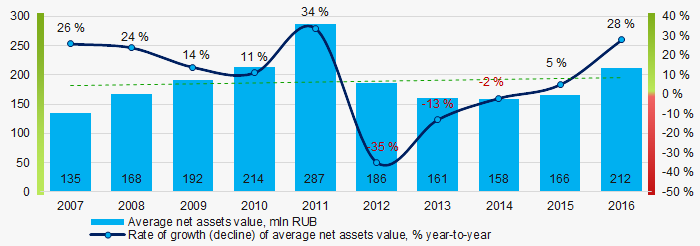 Picture 1. Change in average net assets value of chemical companies in 2007 – 2016
Picture 1. Change in average net assets value of chemical companies in 2007 – 2016 For the last three years, the share of enterprises with lack of property is growing (Picture 2).
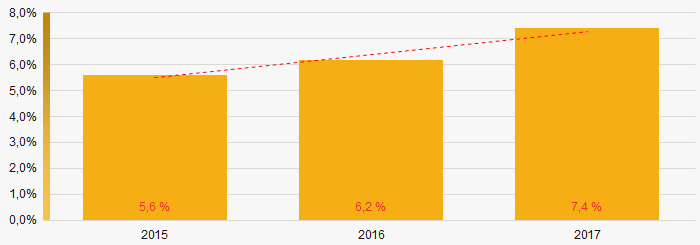 Picture 2.The share of enterprises with negative net assets value in ТОP-1000
Picture 2.The share of enterprises with negative net assets value in ТОP-1000Sales revenue
In 2016, the total revenue of 10 largest companies amounted to 34% from ТОP-1000 total revenue (Picture 3). This fact testifies high level of competition within the industry.
 Picture 3. Shares of TOP-10 in TOP-1000 total revenue for 2016
Picture 3. Shares of TOP-10 in TOP-1000 total revenue for 2016In general, the relative stability in sales revenue is observed (Picture 4).
 Picture 4. Change in average revenue of chemical companies in 2007 – 2016
Picture 4. Change in average revenue of chemical companies in 2007 – 2016 Profit and loss
In 2016 profit of 10 largest companies amounted to 63% from TOP-1000 total profit (Picture 5).
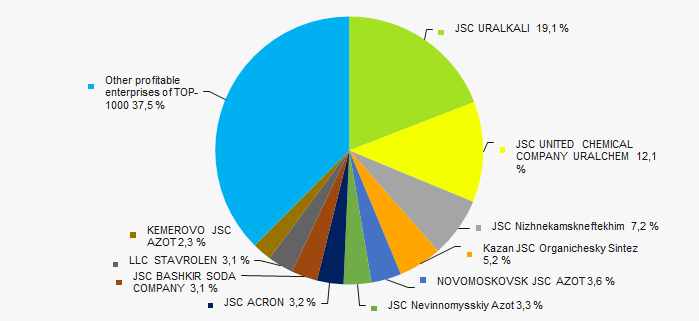 Picture 5. Shares of TOP-10 companies in TOP-1000 total profit for 2016
Picture 5. Shares of TOP-10 companies in TOP-1000 total profit for 2016For the last ten years, the average net profit values show the growing tendency (Picture 6).
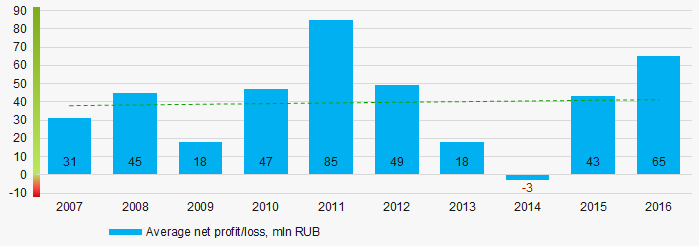 Picture 6. Change in average net profit of chemical companies in 2007 – 2016
Picture 6. Change in average net profit of chemical companies in 2007 – 2016Main financial ratios
For the last ten years, the average values of the current liquidity ratio were within the recommended values - from 1.0 to 2.0 (Picture 7).
The current liquidity ratio (ratio of total working capital to short-term liabilities) shows the sufficiency of company’s assets to meet short-term obligations.
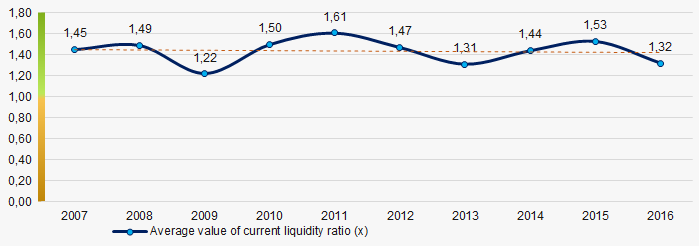 Picture 7. Change in average values of current liquidity ratio of chemical companies in 2007 – 2016
Picture 7. Change in average values of current liquidity ratio of chemical companies in 2007 – 2016 For the last ten years, the decreasing tendency of ROI ratio is observed (Picture 8).
The ROI ratio is calculated as a ratio of net profit to sum of stockholder equity and long-term liabilities and shows the return from equity involved in commercial activities and long-term borrowed funds.
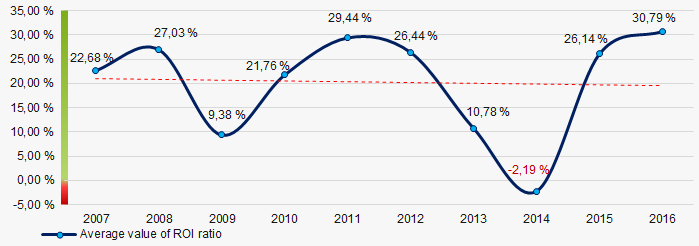 Picture 8. Change in average values of ROI ratio in 2007 – 2016
Picture 8. Change in average values of ROI ratio in 2007 – 2016 Assets turnover ratio is the ratio of sales revenue and company’s average total assets for a period. It characterizes the effectiveness of using of all available resources, regardless the source of their attraction. The ratio shows how many times per year the full cycle of production and circulation is performed, generating the corresponding effect in the form of profit.
For the last ten years, this business activity ratio demonstrated the downward trend (Picture 9).
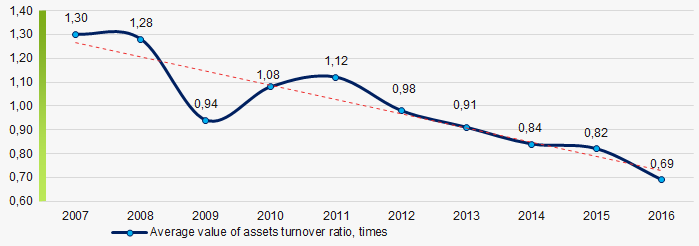 Picture 9. Change in average values of assets turnover ratio of chemical companies in 2007 – 2016
Picture 9. Change in average values of assets turnover ratio of chemical companies in 2007 – 2016 Production structure
The largest share in TOP-1000 total revenue is held by enterprises engaged in manufacture of fertilizers and nitrogen compounds (Picture 10).
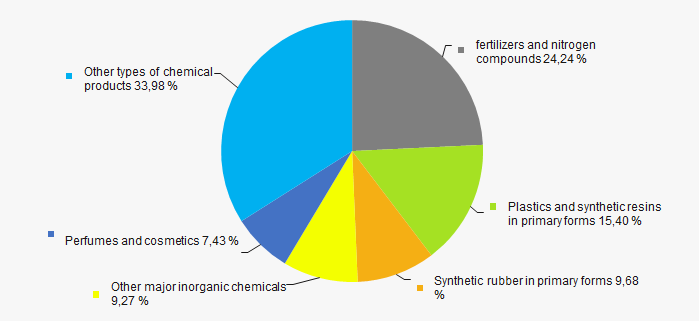 Picture 10. Distribution of manufactured products in TOP-1000 total revenue, %
Picture 10. Distribution of manufactured products in TOP-1000 total revenue, %67% of ТОP-1000 companies are registered in the Unified register of small and medium-sized enterprises of the Russian Federal Tax Service (Picture 11).
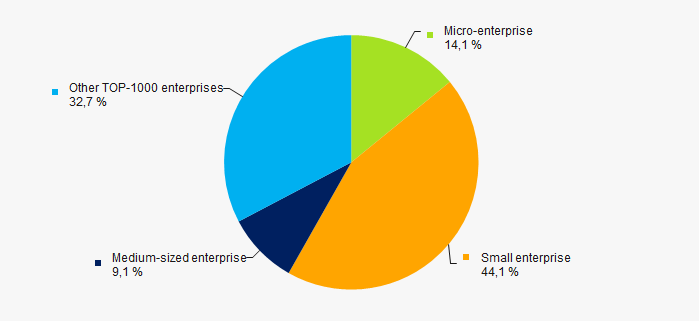 Picture 11. Shares of small and medium-sized enterprises in ТОP-1000, %
Picture 11. Shares of small and medium-sized enterprises in ТОP-1000, %Main regions of activity
Companies of ТОP-1000 are unequally located across the country and registered in 63 regions of Russia. The largest enterprises in terms of revenue are located in Moscow and Republic of Tatarstan (Picture 12).
 Picture 12. Distribution of TOP-1000 revenue by the regions of Russia
Picture 12. Distribution of TOP-1000 revenue by the regions of RussiaFinancial position score
An assessment of the financial position of TOP-1000 companies shows that almost half of them have above average financial position (Picture 13).
 Picture 13. Distribution of TOP-1000 companies by financial position score
Picture 13. Distribution of TOP-1000 companies by financial position scoreSolvency index Globas
Most of TOP-1000 companies got superior/high or strong/medium Solvency index Globas, this fact shows the ability of the companies to meet their obligations in time and fully (Picture 14).
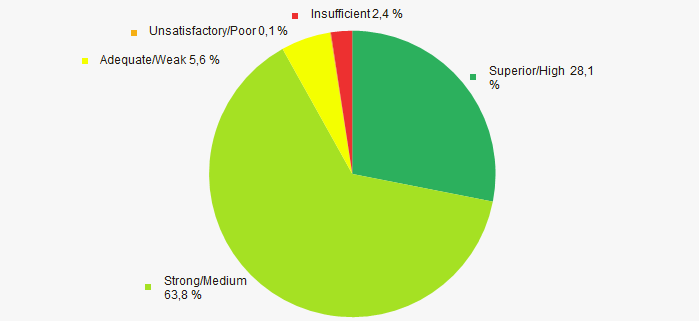 Picture 14. Distribution of TOP-1000 companies by Solvency index Globas
Picture 14. Distribution of TOP-1000 companies by Solvency index Globas Conclusion
A complex assessment of activity of the largest Russian chemical companies, taking into account the main indexes, financial ratios and indicators, demonstrates the presence of favorable trends. However, the growing share of enterprises with lack of property, decrease in average values of ROI and assets turnover ratios are negative factors.
According to the Federal State Statistics Service (Rosstat), in general, within 2017 - 2018 the slight increase of industrial production indexes in the chemical industry is observed (Picture 15).
 Picture 15. Industrial production indexes in the chemical industry in 2017 - 2018, month-to-month (%)
Picture 15. Industrial production indexes in the chemical industry in 2017 - 2018, month-to-month (%)